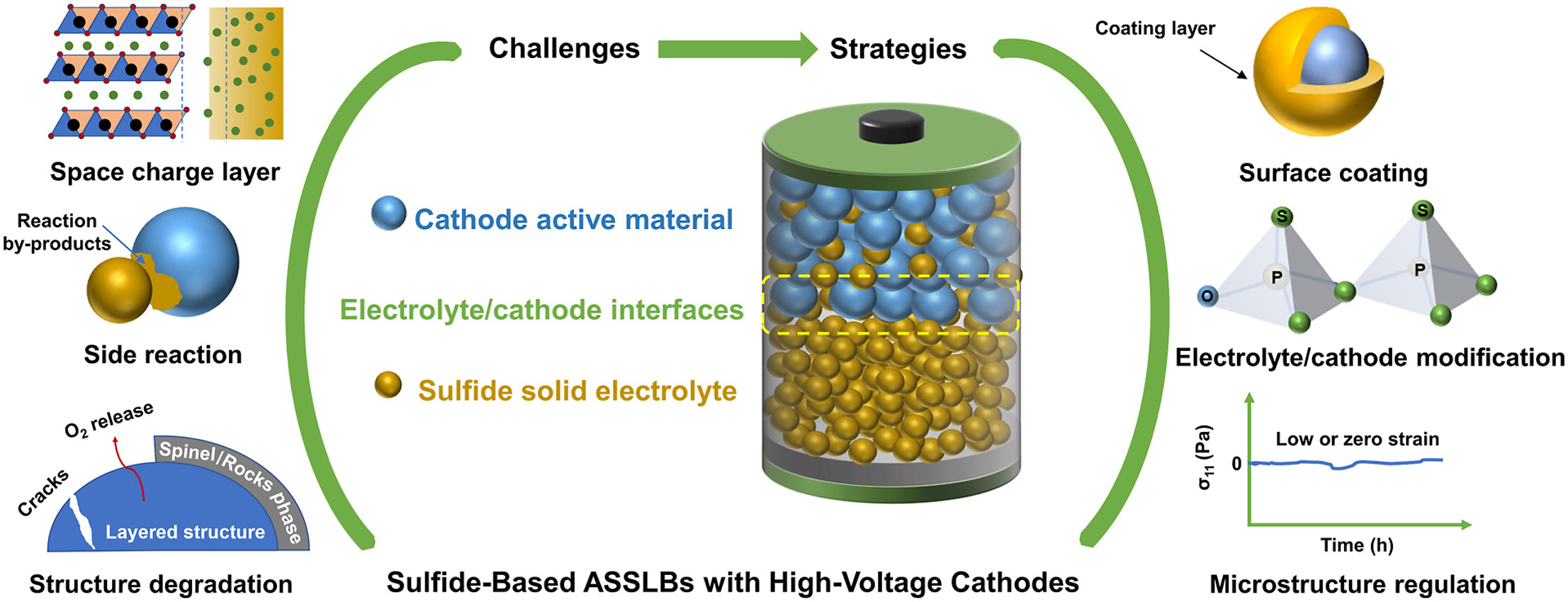-
文章精选
- 当期目录
-
过刊浏览
-
Volumes 96-107 (2025)
Pages 1-332 (September 2025)
-
Volumes 84-95 (2024)
-
Volumes 72-83 (2023)
-
Volumes 60-71 (2022)
-
Volumes 54-59 (2021)
-
Volumes 48-53 (2020)
-
Volumes 42-47 (2019)
-
Volumes 36-41 (2018)
-
Volumes 30-35 (2017)
-
Volumes 24-29 (2016)
-
Volumes 18-23 (2015)
-
Volumes 12-17 (2014)
-
Volume 11 (2013)
-
Volume 10 (2012)
-
Volume 9 (2011)
-
Volume 8 (2010)
-
Volume 7 (2009)
-
Volume 6 (2008)
-
Volume 5 (2007)
-
Volume 4 (2006)
-
Volume 3 (2005)
-
Volume 2 (2004)
-
Volume 1 (2003)
-
Volumes 96-107 (2025)
-
高被引
-
高下载
-
特邀文章
-
专刊合集
-
待刊文章
• Interface challenges between sulfide electrolytes and high-voltage cathodes are systematically summarized.
• Promising strategies to solve the interface issues are comprehensively discussed.
• Future directions are also included to promote the development of ASSLBs.
Sulfide solid electrolytes (SEs) have attracted ever-increasing attention due to their superior room-temperature ionic conductivity (∼10−2 S cm−1). Additionally, the integration of sulfide SEs and high-voltage cathodes is promising to achieve higher energy density. However, the incompatible interfaces between sulfide SEs and high-voltage cathodes have been one of the key factors limiting their applications. Therefore, this review presents a critical summarization of the interfacial issues in all-solid-state lithium batteries based on sulfide SEs and high-voltage cathodes and proposes strategies to stabilize the electrolyte/cathode interfaces. Moreover, the future research direction of electrolyte/cathode interfaces and application prospects of powder technology in sulfide-based ASSLBs were also discussed.

